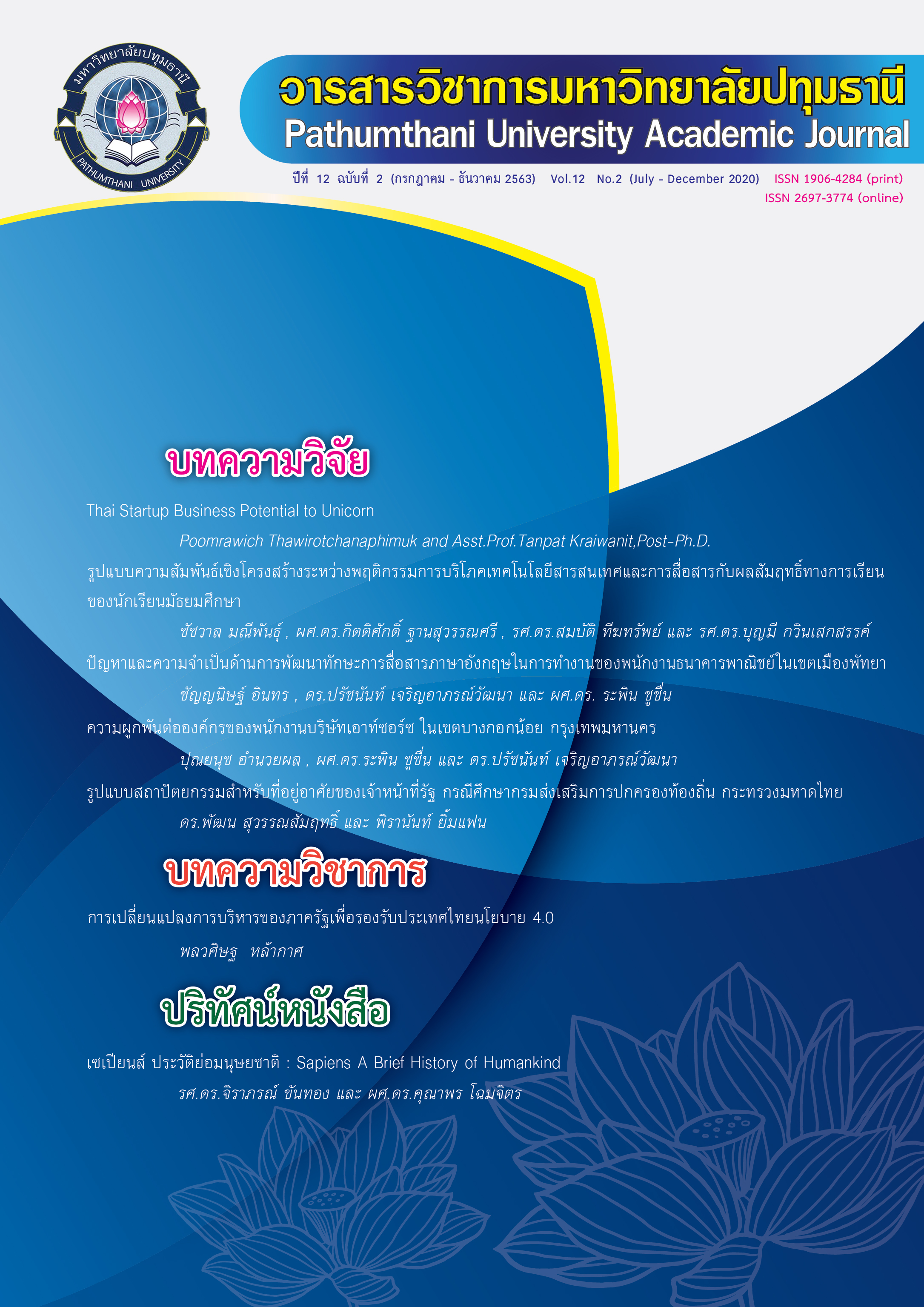IDENTITY OF THAI-CHINESE IN MUEANG DISTRICT, LAMPANG PROVINCE
Keywords:
Identity, Thai-Chinese, Lampang ProvinceAbstract
The research aimed to study Thai-Chinese identity in Muang District, Lampang Province, regarding ethnicity, history, traditional and cultural expression, and behavioral expression. Used a qualitative methodology that included studying-documents, interviews, and focus group discussions on studying a sample of experts and Thai-Chinese families. The data were analyzed by content analysis.
The result was summarized as follows: 1) Cause their migration from China to Muang District, Lampang Province was poverty and escaped the war. 2) Their migration routes were two routes. The first route from Hainan Island, Koh Samui in Surat Thani Province, Other Provinces (such as Bangkok, Nakhon Sawan, Chai Nat, Nakhon Ratchasima), Lampang Province. The Second route from Guangdong and Fujian, Vietnam, Khlong Toei (Bangkok), Lampang Province. 3) Their ethnicity divided into three ethnics were Hainan, Cantonese-Chaozhou, and Hakka. 4) Traditional and cultural expression, namely, constructing shrines, worshiping ancestors, a ritual in respecting and worshiping the Chinese and Buddha deities, changing the cremation ceremony from burial to cremation, usage Thai as the mother tongue, and embellishing Chinese lanterns and characters in various places and signs. (4) Behavioral expression divided into personal expression, namely, cultivating Chinese beliefs, traditions, and cultures for descendants, giving a red envelope to the offspring, gathering relatives on the Chinese New Year, and burning the Chinese offering papers to devote to the dead relatives, and social expression, namely, setting-up the Thai-Chinese foundations, associations, and societies, giving scholarships and participating in activities to help communities and societies with the provincial agencies in return for the merit of the Thai nation
References
Chareonwongsak, K. (2012). The Role of Overseas Chinese in Creating Wealth of the Country. [Online] Available from http://www.kriengsak.com/chinese-in-the-country-wealth
Chuensuwimon, B. (2000). Family Institute of Ethnic Groups in Bangkok: Family System and Social Relations of Chinese Thais in the Bobae Community. (Research Report). Foundation for Social and Humanities Textbook Project.
Hengsadikun, K (2009). Kad-Kong-Ta, the old district telling the story of Lampang. Bangkok : Matichon Printing House, Pak Kret.
Intharaphirom, P., Sibunruang, S. (2004). Perspectives and roles of Chinese Siam in Thai society. Bangkok : Faculty of Arts Chulalongkorn University.
Lanna Post, Newspapers. (2015). Continuing the Dragon: Lampang Chinese fleeing hundreds of thousands of war, settling in Sop Tui trade. [Online] Available from http://www.lannapost.net/2015/11/blog-post_39.html
Preecharatcha, D. (n.d.). Ethnic diversity and integration into the ASEAN Community. [Online] Available from http://www.polsci.tu.ac.th/fileupload/39/58.pdf
Suwimonwan, W. (2015). “A survey of academic works on the Chinese Trade Association and the Chinese Chamber of Commerce in Thailand, the period after World War II”. Journal of Humanities and Social Sciences, Rajapruek University, 1(2).
Tangwongchareon, T. (1999). The ethnic identity of Thai Chinese in the Om-Yai Community. Master Thesis. Chulalongkorn University.
Wongsurawat, W. (2019). “Red capitalists prominently: the influence of the People's Republic of China and new challenges”. The alliance between the royal court and the Chinese business group in Thailand. In Santasombat,
Y. (editor). Chinese capitalism in Southeast Asia. p. 87-113. Chiang Mai: Faculty of Social Sciences, Chiang Mai University.
Wongsurawat, W. (2019). The Crown and the Capitalists: The Ethnic Chinese and the Founding of the Thai Nation. Seattle: University of Washington Press.
Downloads
Published
How to Cite
Issue
Section
License
บทความที่ได้รับการตีพิมพ์เป็นลิขสิทธิ์ของวารสารมหาวิทยาลัยปทุมธานี
ข้อความที่ปรากฎในบทความแต่ละเรื่อง เป็นความคิดเห็นส่วนตัวของผู้เขียน กองบรรณาธิการไม่จำเป็นต้องเห็นด้วยเสมอไป และไม่มีส่วนรับผิดชอบใด ๆ ถือเป็นความรับผิดชอบของผู้เขียนแต่เพียงผู้เดียว



